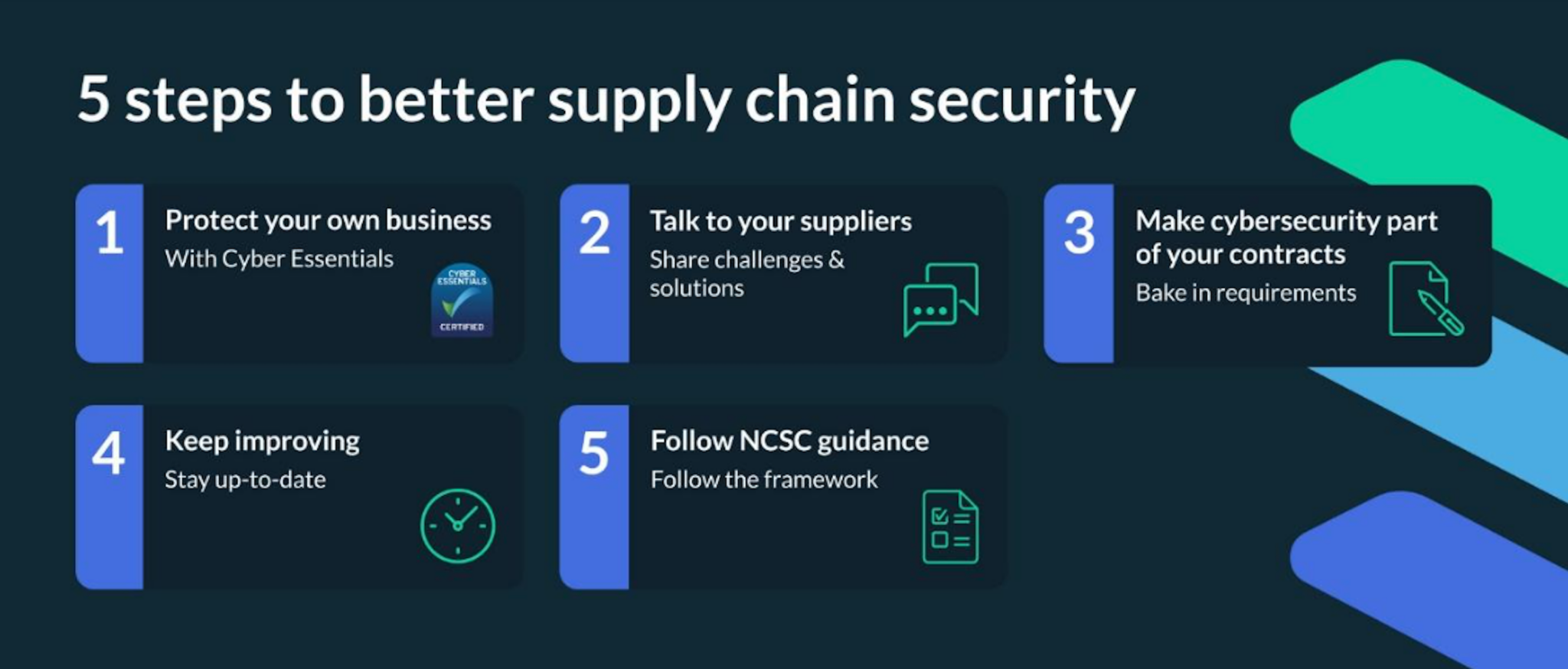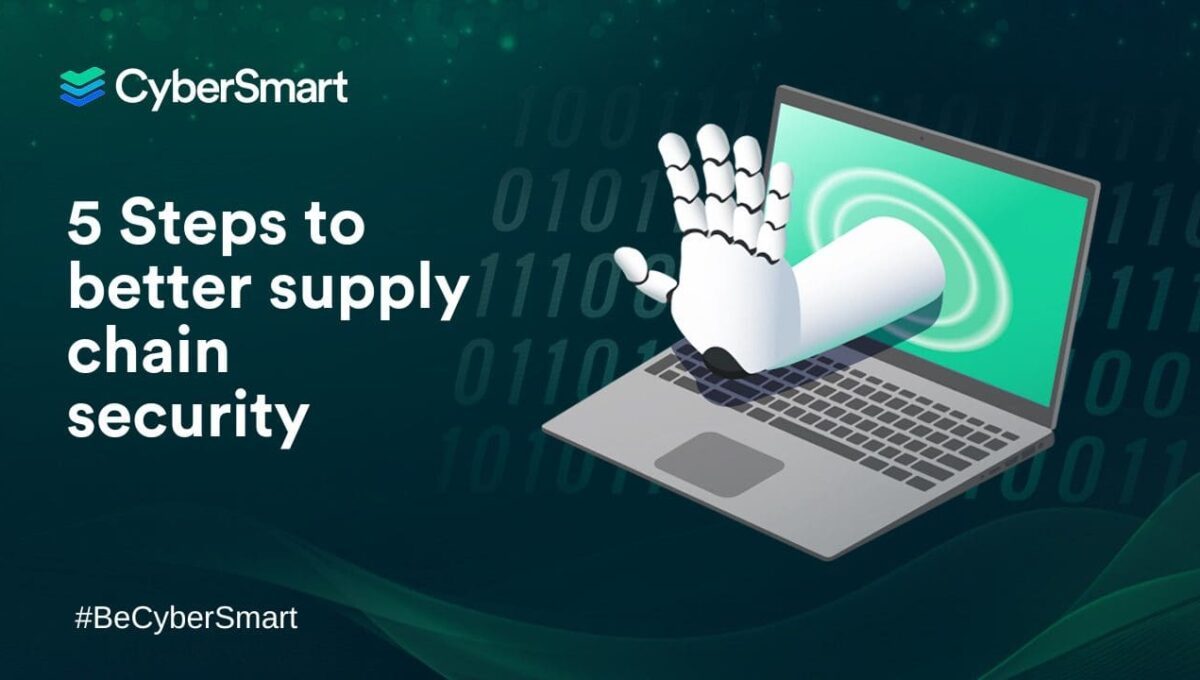It’s not an exaggeration to say that supply chains pose one of the greatest cybersecurity risks to any business. In recent years, there’s been a huge increase in attacks stemming from supply-chain vulnerabilities. According to IBM’s 2023 X-Force Threat Intelligence Index, more than half of security breaches are attributed to supply chain and third-party suppliers, at a high average cost of over $4 million.
It’s a serious problem. And, like most small businesses, you’re probably asking what you can do about it. After all, looking after your own cybersecurity is tricky enough; how on earth do you start addressing gaps in your suppliers’ defences?
To help you get started, we’ve put together 5 supply chain security best practices to strengthen your digital defences.

1. Protect your own business first
This almost goes without saying, but before you delve into your supply chain, it’s worth considering your own cybersecurity status first. Is your business Cyber Essentials certified? Do you have security controls in place? Do you provide regular training for staff on cyber threats and best practices?
If you’ve answered no to any of the above, then these are great first steps in securing your business. And there’s a bonus to taking these measures first. By reviewing your own security, you’ll get a good idea of your business’s crown jewels – those critical aspects of your organisation that need the strongest protection.
2. Talk to your suppliers
Progress begins with dialogue. So talk to your suppliers and partners about their cybersecurity. You may find that your business faces many of the same difficulties and threats.
This can help you work together to ensure everyone in your supply chain works to the same security standards. And keeping dialogue open makes it much more likely that suppliers and partners will let you know faster if something goes wrong – protecting your business in the long run.
3. Make cybersecurity part of your contractual agreements
Behavioural change often requires incentives. Once you’ve established what good cybersecurity looks like for your business, apply those principles to your partner and supplier contracts.
How these agreements look will depend on your organisation. Requiring your partners to have a complete Cyber Essentials certification will be enough for some businesses. Others may need something more comprehensive, like ISO 27001 certification.
The important thing is that you make good cyber hygiene an expectation (rather than a nice to have) for anyone working with your business. By doing so, you not only incentivise good cybersecurity behaviours across your supply chain but also protect your business.
4. Keep improving
Building a strong cybersecurity culture across your network takes time. It requires trust between businesses, and you can’t build that overnight. So persevere if your supply chain doesn’t immediately transform from leaky to locked down.
Cybersecurity is all about learning. As cyber threats evolve, so too do the methods for thwarting them. Stay updated with new threats and tweak and adapt your practices accordingly. You can then use this knowledge to update partners and suppliers and strengthen your supply chain.
5. Follow the NCSC’s new guidance
Finally, if you’re looking for a framework to tie everything together, you could do a lot worse than the National Cyber Security Centre’s (NCSC) supply chain cybersecurity guidance.
The NCSC’s guidance breaks tackling supply chain security down into five basic steps ( in case you were wondering where we got the idea from):
- Understand why your organisation should care about supply chain cybersecurity
- Develop an approach to assess supply chain cybersecurity
- Apply the approach to new supplier relationships
- Integrate the approach into existing supplier contracts
- Continuously improve
It’s a great place to start if you’re serious about tackling cybersecurity across your supply chain.
It’s a journey, not a destination
And remember, securing your supply chain is an ongoing process, but starting now is one of the biggest single investments you can make in protecting your business. Want to know more? Check out our new guide to protecting your business.

